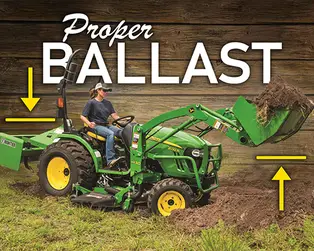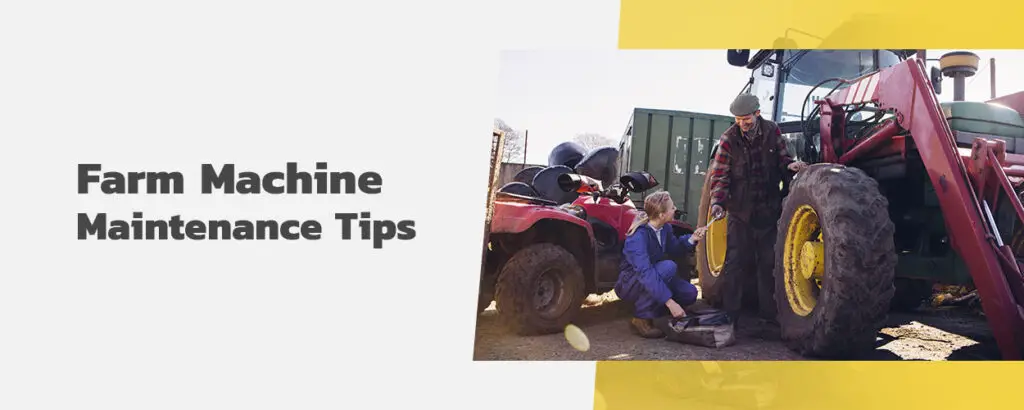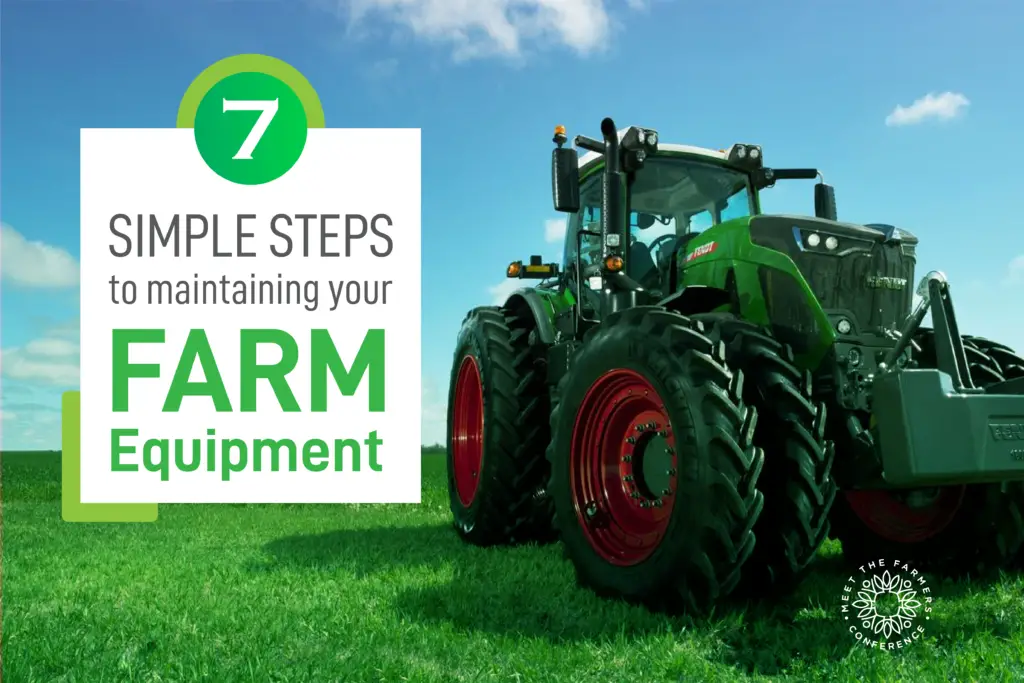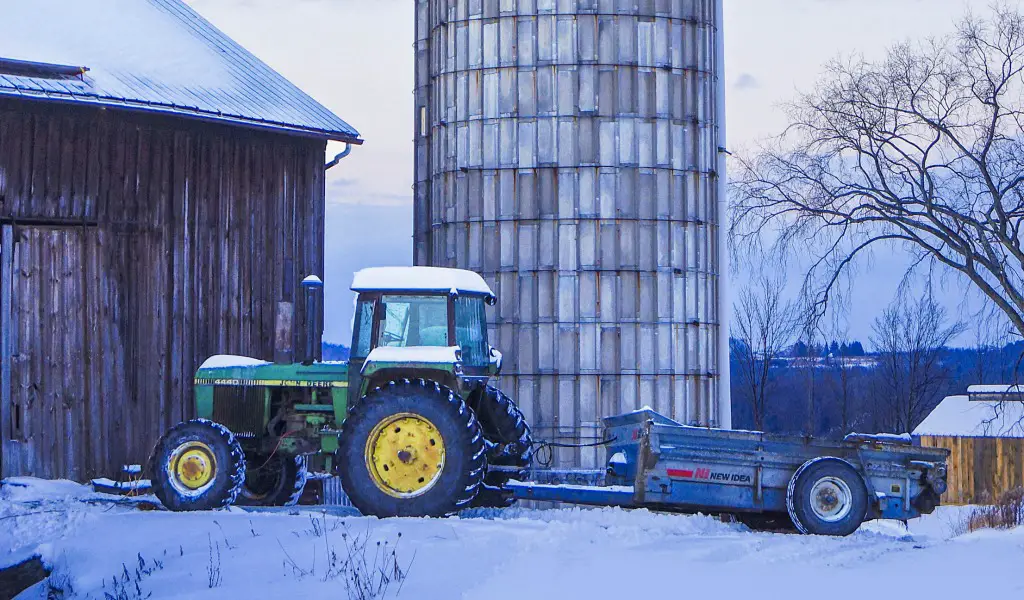This post may contain affiliate links which means I may receive a commission for purchases made through links. Learn more on my Private Policy page.
If you’re a farmer looking to maximize the performance of your farm machinery, one crucial aspect to consider is proper balance. Achieving the optimal balance of your equipment can greatly improve efficiency, reduce wear and tear, and ensure safer operations in the field. In this article, we will explore the key factors that influence machinery balance and provide practical tips on how to achieve the perfect equilibrium for a smoother and more productive farming experience.

This image is property of cdn.dealerspike.com.
Factors Affecting Machinery Balance
Weight Distribution
One of the key factors that affects the balance of farm machinery is weight distribution. The way the weight is distributed on the machine can greatly impact its stability and overall performance. Uneven weight distribution can result in unstable handling and increased wear and tear on the equipment. Therefore, it is important to ensure that the weight is evenly distributed across the machine.
Center of Gravity
The center of gravity is another important factor to consider when balancing farm machinery. The center of gravity is the point at which the weight of the machine is evenly distributed in all directions. It is critical to have a properly calculated center of gravity as it directly influences the stability and maneuverability of the equipment.
Tire Pressure
Tire pressure plays a major role in the balance of farm machinery. Proper tire pressure ensures optimal traction and stability. If the tire pressure is too low, it can result in poor handling and uneven weight distribution. On the other hand, overinflated tires can lead to reduced traction and an uncomfortable ride. Therefore, maintaining the correct tire pressure is essential for achieving optimal balance.
Attachments
Attachments on farm machinery can significantly affect its balance. Different attachments can alter the weight distribution and change the center of gravity, thus impacting the overall balance of the machine. It is important to consider the weight and position of attachments to ensure the machine remains properly balanced.
Importance of Proper Machinery Balance
Improved Stability
Balancing farm machinery is crucial for maintaining stability during operation. Properly balanced equipment will be less prone to tipping over and will provide a more secure and comfortable working environment. Improved stability not only ensures the safety of the operator but also enhances the overall efficiency and productivity of the machine.
Reduced Fatigue and Wear
When farm machinery is balanced correctly, it reduces the impact of uneven weight distribution and vibrations. This, in turn, minimizes operator fatigue and decreases the risk of physical strain or injury. Additionally, balanced machinery experiences less wear and tear, increasing the longevity of the equipment and decreasing maintenance costs.
Enhanced Efficiency
Proper balance of farm machinery leads to improved efficiency in the field. When a machine is correctly balanced, it requires less effort to maneuver, resulting in better fuel efficiency. This translates into reduced fuel consumption and increased productivity. Balancing the machinery also ensures the optimal performance of attachments, maximizing the machine’s capabilities.
Steps to Balance Farm Machinery
Check Manufacturer’s Guidelines
The first step in balancing farm machinery is to refer to the manufacturer’s guidelines. The manufacturer will often provide specific recommendations for weight distribution, center of gravity, tire pressure, and attachments. By following these guidelines, you can ensure that the machinery is balanced according to the manufacturer’s specifications.
Inspect the Machine
Before attempting to balance the farm machinery, it is essential to thoroughly inspect the machine. Look for any signs of damage, loose parts, or worn-out components that could affect the balance. Pay close attention to the weight distribution and any potential issues that may need to be addressed before balancing.
Adjust Weight Distribution
To achieve proper balance, it may be necessary to adjust the weight distribution of the farm machinery. This can be done by moving attachments, adding or removing ballast, or redistributing the load. By evenly distributing the weight across the machine, you can optimize its stability and performance.
Calculate the Center of Gravity
Calculating the center of gravity is a critical step in balancing farm machinery. This can be done by determining the dimensions of the machine and using trigonometry or online tools. Once the center of gravity is calculated, adjustments can be made to ensure the weight is evenly distributed around it.
Adjust Tire Pressure
Proper tire pressure is essential for achieving optimal balance in farm machinery. Consult the manufacturer’s recommendations for the correct tire pressure for your specific machine. Regularly check and adjust the tire pressure to maintain consistency and ensure stable operation.
Consider Additional Attachments
When using attachments on farm machinery, it is important to consider their impact on the overall balance. Ensure that the attachments are chosen based on compatibility with your machine and the work being performed. Pay attention to the weight and position of the attachments to maintain proper balance.
Conduct Test Run
After making all the necessary adjustments, it is important to conduct a test run to evaluate the balance of the farm machinery. Monitor its stability, handling, and performance in different conditions. If any issues are identified, make further adjustments as necessary until the machine is properly balanced.
Tools for Balancing Farm Machinery
Torque Wrench
A torque wrench is an essential tool for balancing farm machinery. It is used to tighten nuts and bolts to the recommended torque specifications. By ensuring that all components are properly secured, you can maintain the balance of the equipment during operation.
Weighing Scale
A weighing scale is used to accurately measure the weight of attachments, ballast, or other additional loads. This helps in determining the overall weight distribution and making necessary adjustments to achieve optimal balance.
Leveling Device
A leveling device, such as a bubble level or an electronic level, is used to determine if the machinery is sitting level. This is important for calculating the center of gravity accurately.
Tire Pressure Gauge
A tire pressure gauge is a simple yet important tool for maintaining proper tire pressure. It allows you to check and adjust the tire pressure according to the manufacturer’s recommendations.

This image is property of www.pequea.com.
Weight Distribution Adjustments
Moving Attachments
Sometimes, attachments may need to be repositioned to achieve proper weight distribution and balance. By moving attachments closer to or further from the main body of the machinery, you can optimize the weight distribution and enhance stability.
Adding or Removing Ballast
Ballast refers to additional weight that is added or removed to achieve the desired balance. It can be in the form of weights, fluid, or other materials. Adding or removing ballast can help in adjusting the weight distribution and center of gravity as needed.
Shifting Weight
Shifting weight refers to redistributing the load on the machinery. It involves rearranging the position of items and optimizing their placement to achieve even weight distribution. This can be done by adjusting the position of tools, equipment, or cargo.
Calculating the Center of Gravity
Determining Machine Dimensions
To calculate the center of gravity, it is necessary to determine the dimensions of the machine. This can include the width, length, and height of the main body as well as any attachments. Accurate measurements are crucial for an effective calculation.
Using Trigonometry or Online Tools
To calculate the center of gravity, trigonometry can be used for simple machines with basic shapes. However, for complex machinery or irregular shapes, online tools or software designed for calculating the center of gravity can provide more accurate results. These tools take into account the specific dimensions and weight distribution to determine the center of gravity.

This image is property of mtfc.crenov8.com.
Optimizing Tire Pressure
Considering Load Requirements
When setting tire pressure, it is important to consider the load requirements of the specific machinery and the work being performed. Refer to the manufacturer’s recommendations for the recommended tire pressure based on the weight of the machine and the load it will carry.
Consulting Manufacturer’s Recommendations
Manufacturers often provide specific recommendations for tire pressure based on the type and size of the tires used on their machinery. It is important to consult these recommendations to ensure the tires are inflated to the correct pressure for optimal balance and performance.
Maintaining Consistent Pressure
Regularly monitoring and maintaining consistent tire pressure is crucial for achieving proper balance. Fluctuations in tire pressure can significantly affect the stability and handling of the machinery. Use a tire pressure gauge to check the pressure regularly and adjust it as needed to maintain a consistent level.
Choosing and Using Attachments
Matching Attachments to Machine
When selecting attachments for farm machinery, it is important to choose those that are designed to be compatible with your specific machine. Consider the weight, dimensions, and intended use of the attachments. Using attachments that are a good match for your machine will help maintain proper balance and prevent unnecessary strain.
Maintaining Proper Balance while Loaded
When using attachments that add additional weight or change the weight distribution, it is crucial to maintain proper balance, especially when the machine is loaded. Take into account the added weight and adjust the load position as necessary to ensure the machine remains properly balanced during operation.
Considering Safety and Performance
When choosing attachments, safety and performance should be key considerations. Ensure that the attachments are designed and manufactured to meet safety standards. Additionally, consider how the attachments will affect the performance of the machinery. This includes factors such as maneuverability, speed, and fuel efficiency.

This image is property of d27p2a3djqwgnt.cloudfront.net.
Test Run and Evaluation
Monitoring Stability and Handling
Once all the adjustments and enhancements have been made, it is important to conduct a test run to evaluate the balance of the farm machinery. Pay close attention to its stability and handling characteristics in various operating conditions. Take note of any issues or imbalances that may need further adjustments.
Assessing Performance and Efficiency
During the test run, assess the overall performance and efficiency of the machinery. Monitor factors such as fuel consumption, speed, and productivity. Compare the results to previous performance to determine if the balancing efforts have resulted in improvements.
Making Adjustments if Necessary
Based on the test run and evaluation, if any issues or imbalances are identified, make the necessary adjustments. This may involve further weight distribution modifications, changes in tire pressure, or repositioning of attachments. Repeat the test run and evaluation process until the desired balance is achieved.
Regular Maintenance and Checks
Periodic Inspections
Regular maintenance and inspections are essential for maintaining the proper balance of farm machinery. Schedule periodic inspections to identify any issues or imbalances that may have developed over time. This includes checking for wear and tear, loose components, or changes in weight distribution.
Rebalancing when Conditions Change
Changes in the working environment, tasks, or attachments being used may require rebalancing the farm machinery. Keep in mind that the optimal balance may vary depending on the specific conditions. Regularly assess the balance and make necessary adjustments to adapt to changing conditions and maintain optimal performance.
Maintaining Proper Tire Pressure
Proper tire pressure is not a one-time adjustment, but an ongoing maintenance task. Monitor and adjust the tire pressure regularly as recommended by the manufacturer. Proper tire pressure ensures stable and balanced operation, as well as prolongs the life of the tires.
In conclusion, properly balancing farm machinery is crucial for achieving optimal performance and efficiency. Factors such as weight distribution, center of gravity, tire pressure, and attachments all play a significant role in maintaining balance. By following the steps outlined in this article and using the appropriate tools, you can ensure that your farm machinery is properly balanced. Regular maintenance and periodic checks are important to address any changes in weight distribution or conditions. Achieving and maintaining proper balance will result in improved stability, reduced operator fatigue and wear, enhanced efficiency, and ultimately, increased productivity on the farm.

This image is property of www.agriculture.com.
This post may contain affiliate links which means I may receive a commission for purchases made through links. Learn more on my Private Policy page.

